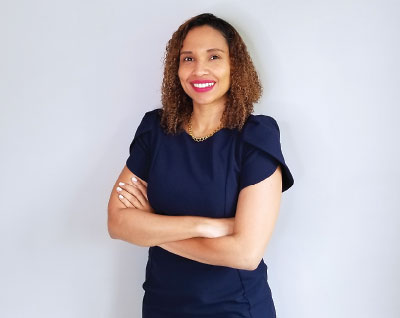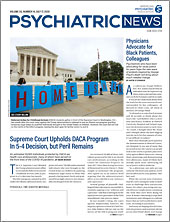Annie Montgomery can remember when local churches and pastors were involved in every aspect of the lives of their African American congregants.
“During the civil rights movement, the church offered a feeling of empowerment, a feeling of safety that you couldn’t find anywhere else,” said Montgomery, co-pastor of the Tabernacle Bible Church and director of the Tabernacle Family Life Counseling Center in Wichita, Kansas.
That sense of empowerment and safety that faith provides is why Lisa Harding, M.D., has devoted her time to working with faith leaders in the Black community. Black individuals, for various reasons, are often resistant to talking about mental health, she said, but bridging the gap between faith and mental health awareness may help reduce stigma.
Harding is a clinical instructor in the Department of Psychiatry at Yale School of Medicine. She has designed and hosted a workshop for African American faith leaders using the resource
Mental Health: A Guide for Faith Leaders, created by the APA Foundation (APAF) and the Mental Health and Faith Community Partnership Steering Committee, a collaboration between psychiatrists and clergy. The goal is to deliver the guide’s information in an interactive format, providing general knowledge of mental illness and increasing awareness of mental health services available in the community.
She successfully delivered the workshop in Wichita in 2019 to 40 attendees who represented over 15 congregations. “The hypothesis was that increased awareness and educational clarification would increase the number of African Americans accessing mental health services in Wichita,” she said.
According to a PEW Research Center survey, 83% of Black respondents said that they believe in God with absolute certainty. Also, the proportion of African Americans who need treatment and receive it is only half that of whites, according to the National Institute on Minority Health and Health Disparities.
The desire within the faith community to address mental health is there, Harding said. Faith leaders just need the support and tools to do so effectively.
Educating Faith Leaders
Harding’s exploration of the faith community’s relationship with mental health issues began when she moved to the United States from St. Lucia. While living in Iowa, she wondered: If Black people aren’t going to the doctor to talk about their mental health needs, where do they go?
It quickly became apparent that in the Black community, pastors were fielding questions from parishioners related to mental health. But the pastors were ill equipped to offer help or resources when necessary, Harding said.
Soon after, she moved to Kansas to complete her psychiatry residency at the University of Kansas and was awarded an APA/APAF Diversity Leadership Fellowship. Through providing free events and doing a lot of work in the community, she began to gain the trust of the local pastors, which is how she met and worked with Montgomery.
“Dr. Harding brought such a great awareness of the psychiatric point of view,” Montgomery said. “People don’t always understand how medications can work with the therapy process, and she was able to make that connection for us.”
Much of the eight-hour workshop she presented in Wichita involved simply educating members about mental illness diagnoses. Her slides included information on depression, obsessive-compulsive disorder, and posttraumatic stress disorder, among many others.
NAMI also presented its Sharing Hope program, a 60-minute presentation, including a scripted dialogue, specific to African Americans and centered on talking about mental health and decreasing stigma.
Additionally, the participants broke into small groups to discuss different topics, such as what to do if a person walks into the church drunk or if someone with suicidal ideation calls the church prayer line.
According to the results of a survey that Harding asked participants to complete, most reported that they had found the workshop helpful, and 83% strongly agreed that a training course among faith leaders would help reduce the stigma of mental illness in African American communities.
Harding has since moved to Connecticut and intended to host the workshop again, but the COVID-19 pandemic derailed her plans. She is currently working with some local churches to determine if they can hold the workshop via web conferencing. She has been approached by the U.S. Department of Health and Human Services about hosting a webinar that could teach mental health practitioners how to deliver the workshop, as well.
Connecting Communities
It is difficult for the African American community to trust health professionals, which is why working through churches can be so effective, said Montgomery, who is a licensed clinical marriage and family therapist.
“African Americans are raised not to share our intimate issues with other people. We’re raised to trust God. Period,” Montgomery said. “We’ve always believed that if you look good and act right on the outside, you must be OK on the inside. But that is such a cover up for so many issues.”
The gaps between faith and mental health care must be bridged, but change may need to occur on both sides, Harding noted. Mental health professionals can sometimes be as wary of faith as the faith community is of both mental health and health care and professionals.
Once, while Harding was working on an inpatient psychiatric ward, she overheard a nurse say that because a patient was speaking to God aloud in her room, she may need a higher antipsychotic dosage. “And I asked the question: Why can’t both be true?” Harding said. “Why can’t she be psychotic and still pray?”
It is complicated, she said, because the symptoms of some serious mental illnesses do include hyper-religious behavior. But her passion is finding the middle ground between psychiatry and religion. “Both can exist together,” she said. ■
Mental Health: A Guide for Faith Leaders is posted
here.

